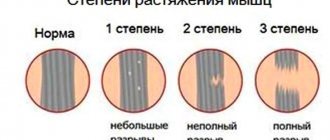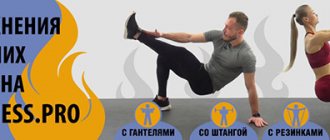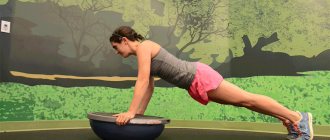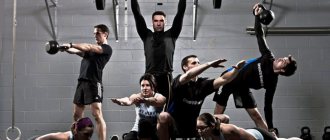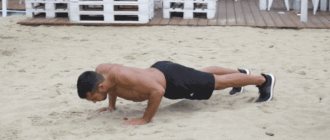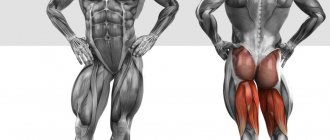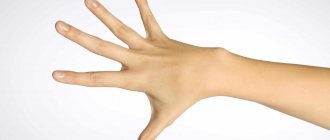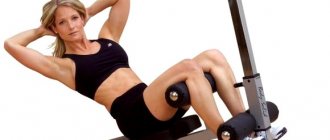Dynamic and static work of muscles is necessary for the normal functioning of the human body, the execution of movements characteristic of our body. The human body is designed by nature to cope well with both types of stress. Dynamic and static work of muscles allows you to walk, jump, run, make movements familiar in everyday life, sit in one place, and stand. In short, any human activity, from immobility to active sports exercises, is a complex muscle functionality formed by two types of actions.
Types of abbreviations
In skeletal muscle, there is a single contraction and a summed contraction, or tetanus. A single contraction is a contraction that occurs in response to a single stimulus sufficient to cause excitation of the muscle. After a short hidden period (latent period), the contraction process begins. When recording contractile activity under isometric conditions (the two ends are fixedly fixed), in the first phase there is an increase in tension (force), and in the second phase it drops to the initial value. Accordingly, these phases are called the tension phase and the relaxation phase. When recording contractile activity in an isotonic mode (for example, under normal myographic recording conditions), these phases will be called the shortening phase and the lengthening phase, respectively. On average, the contractile cycle lasts about 200 ms (frog muscles) or 30-80 ms (in warm-blooded animals). If a muscle is exposed to a series of direct irritations (bypassing the nerve) or indirect irritations (through the nerve), but with a large interval, at which each subsequent irritation falls in the period after the end of the 2nd phase, then the muscle will respond to each of these irritants with a single contraction .
Summed contractions occur if 2 or more irritations are applied to a muscle, and any subsequent irritation (after the previous one) is applied either during the 2nd phase (relaxation or lengthening) or during the 1st phase (shortening or tension) .
| Single cut A - action potential; B - muscle contraction 1 - voltage phase; 2 - relaxation phase | Cumulative reduction a - single contraction; b-d - dentate tetanus; d - smooth tetanus |
In the case when every second stimulus falls during the relaxation (lengthening) phase, a partial summation occurs - the contraction has not yet completely ended, but a new one has already arisen. If many stimuli are supplied at a similar interval, then the phenomenon of dentate tetanus occurs. If irritants are applied at shorter intervals and each subsequent irritation falls into the shortening phase, then the so-called smooth tetanus occurs.
Static or dynamic types of training. What to choose?
All physical exercises are divided into dynamic, static, static-dynamic, aerobic types. You can also add stretching exercises here. Today we’ll talk about the difference between static and dynamic training, and find out for whom which type of training is suitable.
The most famous type of training is dynamic exercises. Dynamics means movement. Thus, dynamic exercises are exercises in which movement is performed in the body. Thanks to the dynamics, the muscles lengthen and shorten, which allows them to be trained - enlarged, and create a beautiful relief. Dynamic exercises also help burn calories. This type of exercise is perfect for both beginners and beginners in the training process. It is enough to choose a feasible set of exercises.
Any exercise on a simulator is a dynamic exercise. But even without exercise machines, there are a considerable variety of them: squats, burpees, pull-ups, push-ups, bends, lunges, leg raises.
There are a variety of exercises with weights, for example, a set of exercises by athlete Alexander Zass. It includes 8 different exercises using sandbag weights. With regular use of the complex, it is possible to build up to 15 kilograms of muscle.
Exercise 1.
The bag lies in front of you. Your task is to bend forward towards him, bending your knees. Place the bag on your chest and, after a pause, lift it up. It must be lowered in the same order, through the chest. Perform 10-15 repetitions.
Exercise 2.
Body position – standing straight, heels together, toes apart. The bag is in the hands. We squat with him on our toes and press the bag upward. The descent of the sac occurs through the chest.
Exercise 3.
We grab the bag with one hand and bend our arm. Place the bag on your shoulder. We press up, straightening the elbow. Rotate your wrist and bag left and right. We return the weight to the shoulder and repeat the same with the opposite hand.
Exercise 4.
We stand straight, holding a weight in our palms. We move our elbows to the side. Using a push with your hand and feet, we throw the bag from one hand to the other, drawing an arc in the air. Gradually increase the flight amplitude. 10-15 repetitions are performed.
Exercise 5.
Grasp the bag with both hands and place it on your lap. Straighten your legs and torso, throwing the top of the bag 1-1.5 meters. You need to catch a fallen weight with your neck and shoulder blades, while springing your legs. Push off and throw the bag to the left, catch it with your hands. Then do the same on the right side. 10-15 repetitions on each side.
Exercise 6.
Starting position – lying down. Place the bag behind your head. With your arms outstretched, lift it up, then lower it to your chest. Perform a bench press. Repeat 10-15 times.
Exercise 7.
Lying on the floor, raise your legs and bend your knees. Place weights on your feet. Perform a press by lowering your legs.
Exercise 8.
We hold the bag on our arms raised up. Lower it left and right, drawing an arc in the air. Perform 10-15 repetitions.
All these exercises speed up your metabolism, reduce the amount of subcutaneous fat and build muscle.
Static exercises or isometric exercises are aimed at deeper muscle development. The work is aimed at tensing the muscles, strengthening them, but not building them up. Static exercises develop endurance more. As a rule, such exercises are performed by already trained athletes, and not by beginners. When performing them, it is extremely necessary to monitor the technique. Static exercises consist of maximum muscle tension for 5-10 seconds. But, there are longer exercises, such as planks, which can last up to 2 minutes.
Static exercises can often be seen in Pilates. Here are some of them:
- Half-swallow
From a standing position, we place our hands on our belts and move one leg back. Hold this position for half a minute. Then we change the leg.
- Plie
Legs are spread wide apart, toes pointing to the sides. Hands are on the waist. We do a half squat on our toes and stay in this position for as long as possible.
- High chair
Standing with your lower back pressed tightly against the wall, we squat until our knees form a right angle. We linger in this position.
- Plank
Perhaps the most popular static exercise. We lie down on the floor, then rise up, leaning on our elbows, legs straight. The whole body is elongated in one line. The pelvis does not stand out. We stand for 30 seconds - a minute. We gradually increase the execution time.
The plank can be performed on one leg. Then we move one of the legs to the side, pulling the toe towards us. There is also a “reverse plank”. To do this, you need to lie face up and bring your legs together. Rise up with your arms outstretched, resting on your palms. We point our fingers towards the legs at the level of the shoulder blades. The body looks like one straight line. We are delayed.
There are hybrid types of exercises - static-dynamic. This is when movement alternates with delay and muscle tension.
For example:
Exercise 1.
We lie face down on the mat. We stretch our arms forward. The legs can be fixed by a partner or trainer. Now we raise the body up and hold for 30-60 seconds. Next, without lowering the body, we spread our arms to the sides and again fix the position of the body for 30-60 seconds. Then we move our hands back, while continuing to fix the body. Hold for another 30-60 seconds. Next, straighten your left arm forward. We fix the position. Then right and freeze again. To relieve excess tension from your back, at the end of the approach you need to sit on your knees and bend forward, stretching and relaxing your back as much as possible.
Exercise 2.
Lying on your side, lift your leg slightly up. The toes are parallel to the floor. Hold the position for 30-60 minutes, then begin to make springy movements with your leg. There is no need to relax the muscles. Alternate several approaches.
Each type of exercise is designed to perform its own function for the body. Choose what you need based on your goals.
Muscle contraction modes
Skeletal muscle is characterized by two main modes of contraction - isometric and isotonic. The isometric mode manifests itself in the fact that tension increases in the muscle during its activity (force is generated), but due to the fact that both ends of the muscle are fixed (for example, the muscle is trying to lift a large load), it does not shorten. The isotonic regime is manifested in the fact that the muscle initially develops tension (force) capable of lifting a given load, and then the muscle shortens - changes its length, maintaining tension equal to the weight of the load being lifted. Since isotonic contraction is not “purely” isotonic (elements of isometric contraction take place at the very beginning of muscle contraction), and isometric contraction is also not “purely” isotonic (there are still elements of displacement, of course), it is proposed to use the term “auxotonic” reduction" is mixed in nature.
The concepts of “isotonic” and “isometric” are important for analyzing the contractile activity of isolated muscles and for understanding the biomechanics of the heart.
Modes of smooth muscle contraction. It is advisable to distinguish isometric and isotonic modes (and, as an intermediate one, auxotonic). For example, when the muscular wall of a hollow organ begins to contract, and the organ contains fluid, the outlet for which is blocked by the sphincter, then an isometric mode situation arises: the pressure inside the hollow organ increases, but the size of the SMC does not change (the fluid does not compress). If this pressure becomes high and leads to the opening of the sphincter, then the SMC goes into an isotonic mode of operation - fluid is expelled, i.e. the size of the SMC decreases, but the tension or force remains constant and sufficient to expel fluid.
Physiology, muscle classification of muscle fibers
Muscle fibers are divided into 3 types: skeletal, cardiac and smooth.
Skeletal fibers are divided into phasic (they generate AP) and tonic (they are not able to generate a full propagating action potential). Phasic fibers are divided into fast fibers (white, glycolytic fibers) and slow fibers (red, oxidative fibers).
Smooth muscles are divided into tonic and phasic tonic. Tonic fibers are not capable of developing “fast” contractions. In turn, phasotonic muscles can be conditionally divided into those with automaticity - capable of spontaneous generation of phasic contractions, and into muscles that do not have the property of automaticity.
The main morpho-functional element of the neuromuscular system is the motor unit
(DE).
DE is a motor neuron with muscle fibers innervated by it. The axon of a motor neuron from the spinal cord passes as part of the peripheral nerves to the muscle, within which it branches into many terminal branches. Each terminal branch ends on one muscle fiber, forming a neuromuscular synapse.
Impulses traveling along the axon of a motor neuron activate all muscle fibers innervated by it. Therefore, the MU functions as a single morphofunctional formation.
Resulting in a feeling of muscle fatigue
There are two mechanisms of fatigue:
1) Peripheral
– inside the muscles:
- lactic acid accumulates, the environment becomes acidified, and proteins denature;
- Glycogen reserves are running out, and the supply of glucose in the blood is limited.
2) Central
fatigue (neuropsychic, plays a leading role in muscle fatigue) develops in the cerebral cortex, and the flow of impulses to the motor neurons of the spinal cord stops.
To restore the performance of any muscle group after central fatigue, it is not complete rest that is more favorable, but intensive work of another muscle group - “active rest”.
Physiologist Ivan Mikhailovich Sechenov proved that the right hand rests faster if the left hand works during its rest.
During dynamic work (when movements occur), fatigue occurs more slowly than during static work (when the muscle is constantly contracted and does not move), due to better blood flow and active rest.
Muscle fiber
Structure
The main structures that ensure its excitation and contraction. These structures include:
surface membrane (sarcolemma), forming longitudinal depressions - T-tubules;
sarcoplasmic reticulum,
Ca2+ depot employee;
myofibrils -
bundles of parallel filaments of actin and myosin.
Contraction mechanisms
Main stages
The stages of skeletal muscle fiber contraction are as follows (Fig. 3.2).
1. An AP occurs on the sarcolemma, which in its parameters and mechanisms is basically similar to the AP of nerve cells.
2. AP is carried out along the sarcolemma, which leads to depolarization of T-tubules.
3. Depolarization of T-tubules leads to the opening of calcium channels of the sarcoplasmic reticulum.
4. Ca2+ is released from the sarcoplasmic reticulum.
5. Ca2+ triggers the interaction of actin with myosin; the muscle contracts.
6. Ca2+ is pumped back into the sarcoplasmic reticulum by the Ca2+ ATPase (calcium pump).
7. The interaction of actin with myosin stops; the muscle relaxes.
Two important features of contraction of a single fiber of skeletal muscle follow from this mechanism.
The force of contraction is proportional to the concentration of Ca2+ in the cytoplasm (sarcoplasm).
The contraction of a single muscle fiber does not depend on the strength of the stimulus, that is, it obeys the “all or nothing” law. This is due to the fact that:
the force of contraction depends on the concentration of Ca2+ in the sarcoplasm;
the amount of calcium released from the sarcoplasmic reticulum in response to one AP depends on the parameters (duration and amplitude) of the AP;
AP parameters do not depend on the strength of the stimulus; therefore, the amount of Ca2+ released does not depend on the strength of the stimulus.
Mechanisms of action of Ca2+
As already mentioned, Ca2+ acts on contractile proteins (actin and myosin) not directly, but through regulatory proteins. In striated muscle, these proteins are troponin and tropomyosin.
Regulatory proteins, contractile proteins and Ca2+ interact as follows:
in the absence of Ca2+, the active centers of actin filaments are covered by tropomyosin filaments. Troponin is associated with tropomyosin filaments;
when Ca2+ enters the myofibrils, this ion binds to troponin;
the interaction of Ca2+ with troponin leads to displacement of tropomyosin filaments; the active centers open and become available for the attachment of myosin cross bridges.
Energy of reduction
One cross-bridge cycle (binding of the myosin bridge to actin - rowing movement - detachment) requires one ATP molecule
It is important that it attaches to the bridge when it is associated with actin, and only after that the bridge acquires the ability to detach. In the absence of ATP, myosin bridges are permanently associated with actin; This is the mechanism of rigor mortis
This feature is of great importance for the contraction of smooth muscles (see below, section “Smooth muscles”).
Characteristics of muscle contraction
When recording membrane potential and muscle contraction simultaneously, the following important features are visible.
The duration of the AP (milliseconds) is much less than the duration of the contraction (tens or hundreds of milliseconds).
The contraction curve can be divided into three phases:
latent period
(from the application of irritation to the onset of contraction);
shortening phase;
relaxation phase.
Summation and tetanus
Since the contraction of the muscle fiber is much longer than the AP, and therefore the refractory period, a repeated stimulus applied during contraction (but after the AP!) can cause new excitation and contraction. This repeated contraction adds up to the previous one, that is, temporary summation occurs.
The summation of several contractions is called
tetanus.
If a repeated stimulus falls into the relaxation phase of the previous contraction, then serrated tetanus
, if in the shortening phase -
smooth tetanus
. Thus, smooth tetanus occurs in response to stimuli of higher frequency than serrated tetanus.
Mechanisms
Summation and tetanus are caused by the fact that with frequent repeated irritations, Ca2+ does not have time to be pumped back into the sarcoplasmic reticulum and accumulates in the cytoplasm, preventing the muscle from relaxing and causing an increasingly stronger contraction.
Brain and movement organization.
Abstract plan.
1.Characteristics of the musculoskeletal system.
- The skeleton is the passive part of the motor system.
- Muscle structure.
- Sensory support of the motor system.
- Organization of the motoneuron pool.
2. General principles of biomechanical structure control.
- Absolute position control.
- Speed control.
- Acceleration control.
3. Mechanism of orientation movements and postures.
- Vestibulo – oculomotor coordination.
- Mechanism of posture regulation.
- Maintaining balance.
4. Conclusion.
Literature.
Batuev A.S. Brain and organization of movements / A.S. Batuev, O.P. Tairov. – L., 1978.
Problems on the topic “Muscle Physiology”
Task 1.
The duration of the muscle shortening period during a single contraction is 0.03 s, and the relaxation period is 0.04 s. Determine the type of contraction of this muscle at a stimulation frequency of 10 Hz.
Standard answer.
The duration of a single muscle contraction is 0.07 s. Interval between adjacent stimuli = 1s: 10 = 0.1 s. Each subsequent irritation will arrive to the muscle when its single contraction, caused by the previous irritation, has already completed. Consequently, at a stimulation frequency of 10 Hz, the muscle will contract as single contractions.
Problem 2
Name the main processes that occur during the latent period during isometric single contraction of a muscle fiber.
Standard answer.
During the latent period during an isometric single contraction under conditions of direct stimulation of the muscle fiber, the following processes occur:
-propagation of excitation along the surface membrane and through the system of transverse tubules of the muscle fiber;
- release of calcium ions from the cisterns of the sarcoplasmic reticulum and their diffusion into the interfibrillar space;
- formation of a connection between the myosin head and the actin center and the formation of the actomyosin complex;
Problem 3
As a result of fatigue, the ATP content in muscle fibers decreased. How and why will this affect a single contraction?
Standard answer.
As a result of fatigue, the ATP content in muscle fibers decreased. The duration of single contractions will increase due to the prolongation of the relaxation phase due to disruption of the calcium pump of the sarcoplasmic reticulum. The amplitude of a single contraction will decrease due to disruption of the process of myosin phosphorylation.
Task 4.
Under the influence of iodine ions in muscle fibers, the activity of the SPR calcium pump decreases. How and why will this affect the duration and amplitude of single muscle contractions?
Standard answer.
The duration and amplitude of single muscle contractions will increase, since the period of existence of the actomyosin complex in its fibers will lengthen due to a slow decrease in the calcium concentration in the interfibrillar space.
Task 5.
How will the nature of the electromyogram change if the number of simultaneously excited fibers in the muscle increases?
Task 5.
How will the nature of the electromyogram change if the number of simultaneously excited fibers in the muscle increases?
Standard answer.
On the EMG, the amplitude of the total action forces removed from the muscle will increase.
Task 6.
How will the EMG pattern change if the frequency of APs that occur in individual neuromotor units increases?
Response standard
The frequency and amplitude of PDs removed from the muscle will increase.
Literature
- Human physiology. Textbook for medical students. universities / ed. V.M. Smirnova M.; Medicine, 2001.-P. 82 – 94.
- Fundamentals of human physiology. Textbook for higher educational institutions in 2 volumes / ed. B.I.Tkachenko - St. Petersburg, 1994. - vol.1-S. 146 168.
- Human Physiology / ed. G.I.Kositsky - M.; Medicine, 1985 –P. 45 – 64.
- Human physiology. In 4 volumes / edited by R.F. Schmidt and G. Tevs - M.; World, 1986- vol. 1 – P. 50 –77.
,
- General course of human and animal physiology. In 2 volumes / ed. A.D. Nozdracheva - Higher School, 1991 - vol. 1 - pp. 36 -69.
6. Course of lectures on normal physiology. In 2 parts / ed. – Perm, 2002 – part 1 – – S. – 20 – 25.
7. The beginnings of physiology: Textbook for universities / Ed. acad. HELL. Nozdracheva - St. Petersburg Publishing House "Lan", 2001. - pp. 93 - 133.
- Human physiology. In 3 volumes. Per. from English /edited by R. Schmidt and G. Tevs.-M Mir, 1966 – vol. 1 – pp. 69 – 87.
5
Muscle fatigue
Fatigue is a temporary decrease in muscle performance as a result of work. Fatigue of an isolated muscle can be caused by its rhythmic stimulation. As a result, the strength of contractions progressively decreases. The higher the frequency, strength of irritation and magnitude of the load, the faster fatigue develops. With fatigue, the single contraction curve changes significantly. The duration of the latent period, the shortening period and especially the relaxation period increases, but the amplitude decreases. The stronger the muscle fatigue, the longer the duration of these periods. In some cases, complete relaxation does not occur. Contracture develops
is a state of prolonged, involuntary muscle contraction.
Muscle work and fatigue are studied using ergography. In the last century, based on experiments with isolated muscles, 3 theories of muscle fatigue were proposed.
1. Schiff's theory: fatigue is a consequence of depletion of energy reserves in the muscle.
2. Pflueger’s theory: fatigue is caused by the accumulation of metabolic products in the muscle.
3. Verworn's theory: fatigue is explained by a lack of oxygen in the muscle.
Indeed, these factors contribute to fatigue in experiments on isolated muscles. ATP resynthesis is disrupted in them, lactic and pyruvic acids accumulate, and the oxygen content is insufficient. However, in the body, intensively working muscles receive the necessary oxygen, nutrients, and are freed from metabolites due to increased general and regional blood circulation. Therefore, other theories of fatigue have been proposed. neuromuscular junctions play a role in fatigue.
.
Fatigue at the synapse develops due to depletion of neurotransmitter stores. However, the main role in fatigue of the musculoskeletal system belongs to the motor centers of the central nervous system. In the last century I.M. Sechenov found that if the muscles of one arm become fatigued, their performance is restored faster when working with the other arm or legs. He believed that this was due to the switching of excitation processes from one motor center to another. He called rest with the inclusion of other muscle groups active
.
It has now been established that motor fatigue is associated with inhibition of the corresponding nerve centers, as a result of metabolic processes in neurons, deterioration in the synthesis of neurotransmitters, and inhibition of synaptic transmission.
How does load affect the development of muscle fatigue and how to quickly restore strength?
After exercise, in principle, muscle pain is a completely normal condition of the body that does not require special treatment and does not cause a feeling of anxiety.
If pain occurs without a specific clear reason, then you should consult a specialist to find out the exact diagnosis. Muscle weakness can be caused by a number of different circumstances, as described below.
- Injuries and fractures are the main causes of muscle pain.
With injuries to soft or osteochondral tissues, pain is a response. As a rule, with such factors, the doctor prescribes a remedy that will relieve muscle tension and soothe pain. - Physical activity in which muscle mass is under tension.
During this period, lactic acid accumulates in the muscles, and the greater the load, the more acid is formed in the muscle. After the muscle structures begin to relax, the acid irritates the nerve endings and an uncomfortable sensation occurs. In this case, a glass of water with a pinch of soda will help reduce pain resulting from tension. - Stress .
With moral distress and stress, a feeling of discomfort appears in the muscles. Most often, pain in the ligaments occurs at night and in the morning. In science, this phenomenon is called fibromyalgia - a form of myalgia. Most often it constrains the cervical spine, knees and lower back. - Incorrect posture .
As a result of incorrect posture, deformation of osteochondral tissues occurs, which automatically “pulls” the muscles along with them. As a result, a burning sensation occurs along the muscle fibers. - Chronic diseases of osteochondral tissues and blood vessels:
- arthritis, arthrosis, osteochondrosis are the first causes that cause muscle pain and a constant feeling of fatigue. The destruction of bone tissue entails deformation in muscle and soft tissues;
- flat feet is a problem in which the feet become flat and this significantly complicates the process of walking.
In this case, muscle pain may occur in the legs from the foot to the knee; - thrombophlebitis and varicose veins are vascular diseases in which venous elasticity is impaired and blood blockages occur. Inflamed veins, as a rule, “pop” out and cause severe pain. There may be a burning sensation and severe muscle discomfort along the entire length of the affected vein;
- Neuralgia also often causes muscle fatigue.
Seizures resulting from disruption of the peripheral nervous system cause severe weakness. At rest, the muscles do not hurt. In this case, you should not take painkillers, since you need to overcome neuralgic symptoms and muscle fatigue will go away on its own; - Obesity is a common cause of muscle fatigue.
The fact is that an obese figure and large body mass are a constant burden on the physical condition of the body. When walking, your legs, back, and neck often hurt, and aching pain occurs in the muscles in these areas. With this disease, myalgia does not go away on its own, since the muscles are under constant stress.There are two options here - either lose weight or take pharmaceutical drugs that can relieve pain in the muscles.
- Pain during pregnancy .
Pregnancy is a strong physical and mental stress on the body, and the occurrence of muscle discomfort in this position is normal for all women who are expecting a child. It is strictly forbidden to self-medicate and take medications without consulting a doctor.
The feeling of muscle fatigue can be an independent phenomenon or a symptom of a serious illness.
After exertion and excessive stress, the so-called “krepatura” or muscle pain syndrome occurs. Under normal conditions, it goes away in a few days without outside intervention. If a person experiences muscle pain and weakness for no particular reason, this is a reason to worry and contact a specialist.
Important! Muscle fatigue cannot be ignored, as it may be a sign of a serious illness.
Drugs for muscle pain
Medicines for muscle fatigue (www.ustalosty.net)
Before you begin to deal with muscle pain, it is important to understand the cause of its occurrence.
If the feeling of muscle fatigue occurs as a result of muscle overstrain due to physical activity, you can use external pharmaceutical preparations:
- anesthetics such as Menovazin or Novocaine;
- warming or cooling ointments based on medicinal plants and animal products - bee venom, snake venom, chondroitin, mink oil;
- cooling medicines based on mint, camphor or lemon balm.
If muscle fatigue occurs as a result of injury or fracture, then it is better to use painkillers taken orally.
Before taking such medications, it is better to consult a doctor.
Traditional medicine against myalgia
Traditional recipes against muscle fatigue (okeydoc.ru)
In addition to medications, there are a number of folk recipes that can relax muscles, eliminate heaviness in various parts of the body and tone muscle mass.
Examples of the most effective recipes that help with pain in different parts of the body, even in the heart muscle, are described below.
- For frequent muscle fatigue associated with excess weight or constant physical activity, you can use this home remedy: for 3 teaspoons of dry crushed bay leaves, you need 1 spoon of dried juniper.
6 teaspoons of fat of vegetable or animal origin are added to the resulting herbal mixture. The gruel must be stirred until a homogeneous mass is obtained and the affected areas should be treated overnight. Plants have a relaxing and soothing property that will relieve pain and fatigue in muscles for several hours. - Natural honey, mixed in equal proportions with chopped black radish, will perfectly relieve muscle fatigue if a compress is applied to the sore limb, neck or lower back.
Perfectly helps with fatigue during pregnancy, after training or heavy physical labor. - For chronic muscle weakness, the following remedy will help perfectly: 25 grams of dried barberry bark should be poured with a glass of alcohol and left for a week in a dark, cool place.
Take the prepared infusion orally before meals 3 times a day, 30 drops of the product.
Important! Before using any traditional medicine, it is important to make sure there are no contraindications or allergic reactions.
Preventing the feeling of muscle fatigue
Prevention of muscle fatigue (klinikanikonova.ru)
In order not to feel tired and weak in the muscles after small physical exertion, it is necessary to gradually strengthen them.
To do this, you need to perform a small set of exercises every day. Also, do not forget about healthy eating. In order for muscles to be strong and healthy, it is necessary to include vitamins, minerals, protein, and iron in the diet. The daily menu must include dairy products rich in calcium, meat and fish containing phosphorus and protein. Fresh vegetables, berries and fruits are a 100% source of nutrients not only for muscle mass, but also for the entire body as a whole.
Chronic heart and vascular diseases are one of the most popular causes of fatigue.
In this case, it is recommended to take special medications that strengthen the heart muscle, thin the blood and improve its circulation.
In conclusion, I would like to note that there are many reasons for muscle fatigue.
Fatigue and weakness may appear after physical activity, as a result of illness or stress. For chronic muscle weakness, it is necessary to visit a doctor to identify the true cause of muscle pain.
It is worth separately noting bad habits and their effect on the muscles of the body. When drinking alcohol or smoking, blood vessels narrow, which significantly weakens the muscles.
When using tranquilizers or narcotic substances, a person may feel tired all the time.
Remote regulation
Serotonin, bradykinin, histamine, acetylcholine
have
a vasodilating effect
.
Catecholamines
- depending on the type of adrenergic receptors -
alpha vasoconstriction, beta dilation
of muscle vessels.
Nervous regulation
Carried out by the sympathetic nervous system
.
In the arterial part there are alpha and beta adrenergic receptors, in the venous part there are only alpha adrenergic receptors
.
At rest, the vessels of skeletal muscles are under tonic constrictor influence.
sympathetic nervous system.
In working muscles, this influence is reduced
due to central influences /reflexively/ (
functional sympatholysis
).
Through sympathetic cholinergic fibers
- weak
dilatation.
Muscle structure
Skeletal muscle consists of bundles of elongated cells - muscle fibers, which have three properties: excitability, conductivity
and
contractility
.
A distinctive feature of muscle cells from cells that do not have the property of contractility is the presence of sarcoplasmic reticulum.
It is a closed system of intracellular tubes and cisterns surrounding each myofibril. The membrane of the sarcoplasmic reticulum contains two transport systems that ensure the release of calcium ions from the reticulum during excitation and their return from the myoplasm back to the reticulum when the muscle relaxes. In the mechanism for the release of calcium ions from the reticulum during stimulation of the muscle cell, an important role is played by the system of transverse tubules (T-system), which are protrusions of the surface membrane of the muscle fiber.
Muscle fibers have a diameter from 10 to 100 microns and a length from 5 to 400 mm (depending on the length of the muscle). Each muscle fiber contains up to 1000 or more contractile elements of myofibrils,
thickness 1-3 microns.
Each myofibril consists of many parallel thick and thin filaments - myofilaments.
Thick filaments are composed of
myosin protein molecules,
and thin filaments are made of
actin protein.
The arrangement of myosin and thin actin protein filaments is strictly ordered (Fig. 4.1). The bundle of myosin filaments lying in the middle of the sarcomere looks like a dark stripe in a light microscope. Due to the property of birefringence in polarized light (that is, anisotropy), it is called an A-disc. On either side of the A-band there are regions that contain only thin filaments of actin and therefore appear light. These isotropic J-discs extend to the Z-plates. Thanks to this periodic alternation of light and dark stripes, skeletal muscle myofibrils appear striated ( cross-striped).
If the muscle is relaxed, then in the middle part of the A-disc there is a less dense H-zone, consisting only of thick myofilaments.
The H-zone is not visible during muscle contraction. There is a dark stripe running down the middle of the J-disc—this is the Z line. The portion of the myofibril between the two Z lines is called a sarcomere.
Diagram of a muscle fiber sarcomere and the relative position of thick myosin and thin actin myofilaments.
Z - lines separating two adjacent sarcomeres; J-isotropic disk; A - anisotropic disk; H - area with reduced anisotropy
Mechanisms of muscle fiber contraction. In resting muscle fibers in the absence of motor neuron impulses, myosin cross bridges are not attached to actin myofilaments.
Muscle fatigue
The muscle cannot produce work continuously. With prolonged continuous work, a gradual decrease in muscle performance occurs. This condition is called muscle fatigue
. With muscle fatigue, the force of muscle contraction decreases, and the contractions themselves become slower. In this case, there is an extension of the latent period of muscle excitation and a decrease in its excitability. The onset of muscle fatigue depends on the frequency of their contractions. Contracting too frequently causes fatigue. The duration of muscle performance also depends on the amount of load falling on it. For each muscle, a certain optimal contraction frequency and load magnitude can be found at which the muscle’s performance is maintained for the longest time. This leads to a practical conclusion that the magnitude of the load and the rhythm of movement affect the performance of a person engaged in physical labor, and, consequently, the amount of work he performs.
A decrease in muscle performance is caused by nervous and chemical factors. Initially, fatigue occurs in the nerve centers that affect muscle function, and then in the endings of the motor nerves on the muscle fibers (in synapses). As a result, the nature of impulses coming from the nervous system to the muscles changes, which leads to a decrease in the strength and speed of muscle contractions. The dependence of the speed of onset of muscle fatigue on the state of the nervous system has been proven by special experiments and observations. It is known, in particular, the influence of mental and emotional influences (for example, music, singing) on human performance. It has also been proven in special experiments on animals that irritation of the sympathetic nerves reduces muscle fatigue. It is believed that this increases metabolic processes in a tired muscle.
The influence of chemical factors is that in the working muscle the metabolic products (lactic acid, etc.) are not completely oxidized due to insufficient oxygen supply. The accumulation of these metabolic products contributes to muscle fatigue.
In the whole body, muscle performance depends on the functional state of many organ systems: cardiovascular, respiratory, endocrine glands, etc.
Systematic training (exercises) plays a major role in improving performance. During physical training, changes occur not only in the muscles (muscle development and the associated increase in their strength), but also in all other organ systems, in particular the cardiovascular and respiratory systems are strengthened. Thus, in trained people, the heart muscle is better developed and contracts with greater force, so the volume of blood ejected by the heart per contraction and per minute is greater (although the heart rate is slower). Breathing in trained people is deeper, which contributes to better oxygen saturation of the blood (although the breathing rate is reduced). Training leads to improved health and increased endurance of a person.
Physical exercise is one of the methods used in medical practice (physical therapy) to quickly restore the health of patients.
In our country, much attention is paid to physical education and sports as one of the conditions for the comprehensive harmonious development of the human personality. A person in a communist society will be characterized by a harmonious combination of spiritual wealth and moral purity with physical perfection
An example of an experiment
Suppose it is possible to involve a friend in the experiment. In such a situation, you can clearly check how correct the statement above is. It is enough to find an object whose weight is not less than three, but not more than five kilograms. Take the product in one hand, move it away from the body so that the angle reaches 90 degrees, and hold it for a certain period of time with your eyes closed. As soon as your hand is raised, you immediately need to make a mark on the wall, and then note the time using a stopwatch.
The subject’s task is to hold the product motionless without lowering his hands. Over time, the limb itself moves down, then jerks back to its original position or slightly higher. Such behavior indicates a violation of the regulation of muscle tissue activity by the nervous system. In this case, the length of the fibers forming the fabric is adjusted. As soon as a downward deviation is detected, the length is adjusted, which is immediately noted by the muscle receptors responsible for tracking movements. This stimulates the message to be sent to the brain, and the hand returns to its previous position with a reflexive movement.
Structure and innervation
Macroscopic structure and innervation
There are two types of smooth muscles:
unitary;
multi-unitary.
Unitary smooth muscles
These muscles consist of closely interconnected cells that form smooth muscle layers. Cells within these layers are connected by highly permeable intercellular contacts - gap junctions
(nexuses) allowing AP and local potentials to be transmitted from one cell to another.
Thus, sheets of muscle cells functionally behave like syncytium and are therefore called functional syncytium.
Nerve fibers innervate only a part of the cells, and the potentials arising in these cells are transmitted to the remaining cells through gap junctions. Such muscles are present in the vast majority of internal organs, characterized by slow generalized contractions (for example, in the gastrointestinal tract), therefore unitary smooth muscles are also called visceral.
Multiunitary smooth muscles
These muscles consist of individual muscle cells separated by layers of intercellular substance. These cells contract independently of each other, and each of them has a separate innervation. These muscles make up organs whose contractions must be relatively fast and precise - for example, the muscles of the pupil.
Innervation
Smooth muscles are innervated by fibers of the autonomic nervous system (Chapter 6), and not by the somatic nervous system, like skeletal muscles.
Nerve fibers do not form typical synapses on smooth muscle cells. In the case of unitary smooth muscles, the nerve ending branches widely over the muscle layer, and a fairly large distance remains between the nerve fibers and muscle cells. In the branches of the nerve ending there are varicose veins in which vesicles with a mediator accumulate; when the nerve ending is excited, the mediator is released from all varicose veins, pouring out onto a large surface of the smooth muscle layer. At the same time, the transmitter does not reach many cells (especially in the depths of the smooth muscle layers), and potentials are transmitted to them through gap junctions. In multiunitary smooth muscles, the distances between nerve endings and muscle cells are much smaller, and at least one varicose vein is in contact with each cell.
Further we will consider only unitary (visceral) smooth muscles.
Microscopic structure
A typical smooth muscle cell is shown in Fig. 3.8, A
. The main structural features that determine its physiological characteristics are the following:
instead of ordered myofibrils with strict alternation of actin and myosin filaments, there are bundles of actin filaments, in the center of which myosin is located;
these bundles are not located parallel to the fiber axis, but are attached to its membrane in the area of the so-called dense bodies; during contraction, actin bundles tighten the membrane in the area of dense bodies, thereby, as it were, shrinking the cell;
the sarcoplasmic reticulum is poorly developed.
Useful and common
There is one worldwide popular practice that allows you to heal your body, make your muscles stronger and your joints more mobile. We are talking about yoga. Surprisingly, this technique is actually all built on static muscle load, interspersed with breathing exercises. As part of training, endurance improves. However, they note that such practices will not have a positive effect on the speed and accuracy of movements, nor will they help develop reaction speed. Therefore, yoga is recommended for patient people seeking spiritual enlightenment, and not for those who constantly interact with complex devices and instruments that require instantaneous reactions.
To increase the body’s ability to cope with various types of muscle loads, it is recommended to resort to systematic sets of exercises that include the basic elements of gymnastics. Such complexes have been developed and are widely known that have a positive effect on body tissues and help adapt to both dynamic and static loads. There are many options, you can create such a program for yourself, and the exercises here are the simplest, right down to regular morning exercises.
